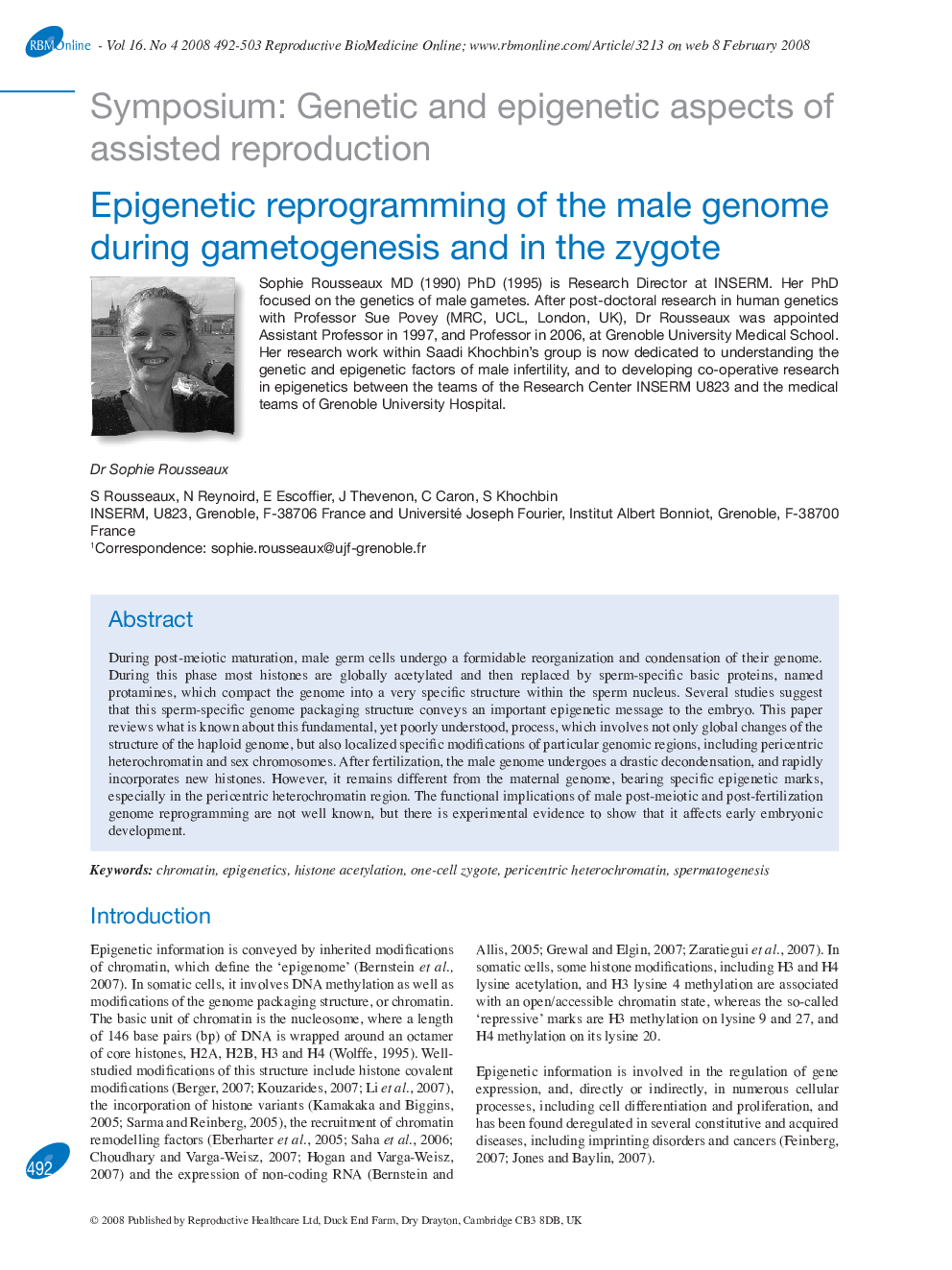| Article ID | Journal | Published Year | Pages | File Type |
|---|---|---|---|---|
| 3972589 | Reproductive BioMedicine Online | 2008 | 12 Pages |
During post-meiotic maturation, male germ cells undergo a formidable reorganization and condensation of their genome. During this phase most histones are globally acetylated and then replaced by sperm-specific basic proteins, named protamines, which compact the genome into a very specific structure within the sperm nucleus. Several studies suggest that this sperm-specific genome packaging structure conveys an important epigenetic message to the embryo. This paper reviews what is known about this fundamental, yet poorly understood, process, which involves not only global changes of the structure of the haploid genome, but also localized specific modifications of particular genomic regions, including pericentric heterochromatin and sex chromosomes. After fertilization, the male genome undergoes a drastic decondensation, and rapidly incorporates new histones. However, it remains different from the maternal genome, bearing specific epigenetic marks, especially in the pericentric heterochromatin region. The functional implications of male post-meiotic and post-fertilization genome reprogramming are not well known, but there is experimental evidence to show that it affects early embryonic development.
